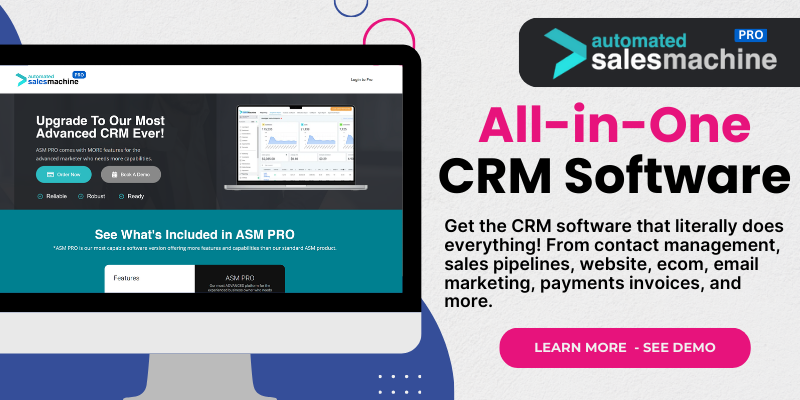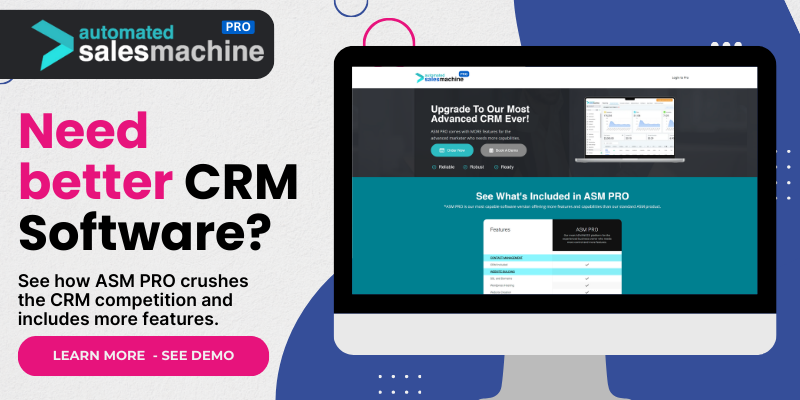Understanding CRM Software and Its Purpose
What is CRM Software?
As a marketer, I’ve dabbled in various tools, but none quite capture the essence of what CRM software does. Customer Relationship Management (CRM) software is all about managing a company’s relationships and interactions with potential customers and clients. It helps us streamline processes, build customer relationships, improve profitability, and boost sales.
The heart of a CRM system lies in its ability to compile client information across different channels. This could be through website visits, phone calls, or emails, all stored in one place. When diving into CRM, knowing how it collects and organizes client data is crucial for maximizing its use.
In my experience, implementing a CRM not only enhances customer service but also empowers businesses to understand their customers on a deeper level. It’s a game-changer when we realize that every piece of data flows into a single platform that is easily accessible.
Importance of Keeping Client Information Secure
Data Privacy Regulations
With great data comes great responsibility. Nowadays, data privacy is not just a buzzword—it’s a necessity. We’re living in a world with stringent regulations like GDPR and CCPA. These laws protect client information and require businesses to handle it with care.
Understanding these regulations is essential. I’ve always made it my practice to educate myself and my team about how to comply with these laws. This means knowing what data can be collected, how it should be stored, and when it needs to be erased. It’s not just about responsibility; it’s also about trust.
Your clients need to know that their personal information is safe with you. A CRM can help with this by allowing you to manage consent and keep track of how data is used. There’s nothing better than having a solid system to ensure your clients feel secure.
Integrating Client Info into the CRM System
Onboarding New Clients
Whenever I start with new clients, the onboarding process is critical. During this phase, I ensure that I gather all necessary information right from the get-go. A good CRM allows you to create custom fields so you can capture the information that is most relevant to your business.
I often develop structured forms within our CRM that prospective clients fill out. This not only saves time but also ensures consistency across all collected data. These forms can be integrated into your website or sent directly through email. The information automatically populates in your CRM, making database management a breeze.
The onboarding is just the beginning; ongoing updates and information gathering happen seamlessly, enhancing the depth of our relationships with clients over time. It’s a win-win for everyone involved!
Utilizing Client Information Effectively
Segmenting Your Audience
Once the client information is in your CRM, the real fun begins—utilizing it effectively. One of my favorite strategies is segmenting the audience based on different criteria. This could include demographics, purchase history, or engagement levels. By dividing clients into groups, targeted marketing can be vastly improved.
I often leverage this data for tailored campaigns. For instance, if I have a segment that frequently purchases a specific product, I can create promotions just for them. This personal touch makes clients feel valued and increases the chances of repeat business.
Additionally, segmentation allows me to analyze trends, purchasing behaviors, and preferences which guide future marketing strategies. It’s an enlightening process that continually boosts my understanding of the clientele.
Regular Maintenance and Updates of Client Data
The Importance of Keeping Data Current
After all the effort to collect and add client data, the last thing we want is for that information to become stale. Regularly maintaining and updating client information is a crucial step in ensuring that our CRM remains a useful tool. It’s like giving your car a good tune-up—necessary for optimal performance.
To keep everything current, I set reminders to review data, especially for clients who haven’t interacted recently. It’s also helpful to send out surveys or emails to check that the information we hold is up to date. Engaging with clients in this way shows them that we value their information and input.
I’ve found that having a disciplined approach to data maintenance not only ensures accuracy but also enhances communication effectiveness and trustworthiness, which is invaluable in client relationships.
Conclusion
In the journey of keeping client information in CRM software, we embark on a path of learning and adapting. Each step—from understanding the software to ensuring data security, onboarding new clients, effectively utilizing information, and maintaining data quality—contributes to a more cohesive client relationship. CRM software truly has the potential to transform the way we interact with our clients, making our processes smarter and more effective.
Frequently Asked Questions
1. Why is it important to keep client information in CRM software?
It’s crucial because CRM software helps centralize all client interactions, providing a seamless method to manage relationships and improve customer service.
2. How does data privacy impact CRM systems?
Data privacy regulations mandate how businesses should handle client information, making it essential to ensure compliance to build trust and avoid penalties.
3. Can I customize the information I collect in a CRM?
Absolutely! Most CRM systems allow you to create custom fields and forms to capture the specific information important to your business.
4. How often should client data be updated?
Client data should be reviewed regularly—ideally, at least quarterly—to ensure accuracy and relevance in ongoing communications.
5. What are the benefits of segmenting clients in a CRM?
Segmenting clients allows for targeted marketing, which increases engagement and conversion rates by offering personalized experiences.

